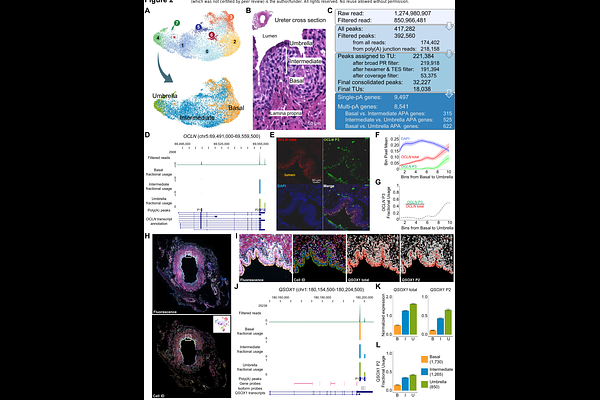Alternative polyadenylation regulates human urothelial differentiation

Alternative polyadenylation regulates human urothelial differentiation
Le, N. B.; Sona, S.; Santo, B.; Schweickart, R. A.; Kochat, V.; Padron, W.; Rai, K.; Lee, S.-H.; Yi, J. M.; Wessely, O.; Lee, B. H.; Ting, A. H.
AbstractThe urothelium is stratified into progenitor basal cells, intermediate cells, and terminally differentiated umbrella cells. Proper renewal of umbrella cells is necessary for maintaining urinary tract barrier integrity. To investigate whether mRNA alternative cleavage and polyadenylation (APA) regulates urothelial differentiation, we developed a single-cell polyadenylation site usage (scPASU) computational pipeline to map cell state-specific polyadenylation sites in single-cell RNA-seq data from 13,544 urothelial cells. Leveraging single-cell spatial imaging, we directly visualized APA events in situ, revealing their spatial specificity within the adult human ureter. APA shaped urothelial differentiation, independent of gene expression changes. Furthermore, key APA-regulated genes shared conserved motifs in their 3\' UTRs, often containing Alu elements, suggesting a potential mechanism regulating poly(A) site selection. Our study establishes APA as a driver of urothelial transcriptome diversity.